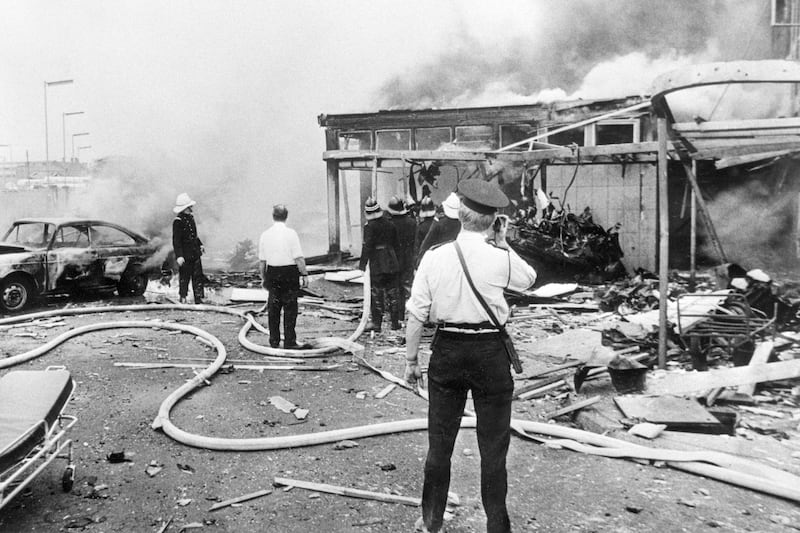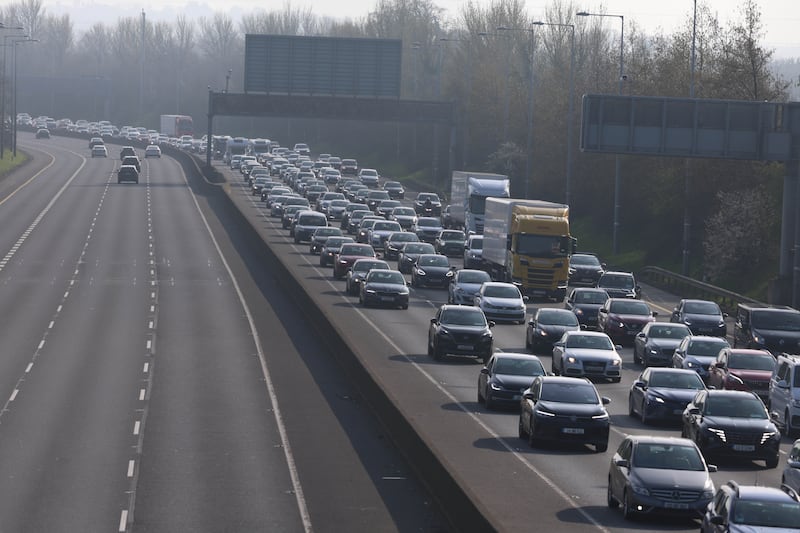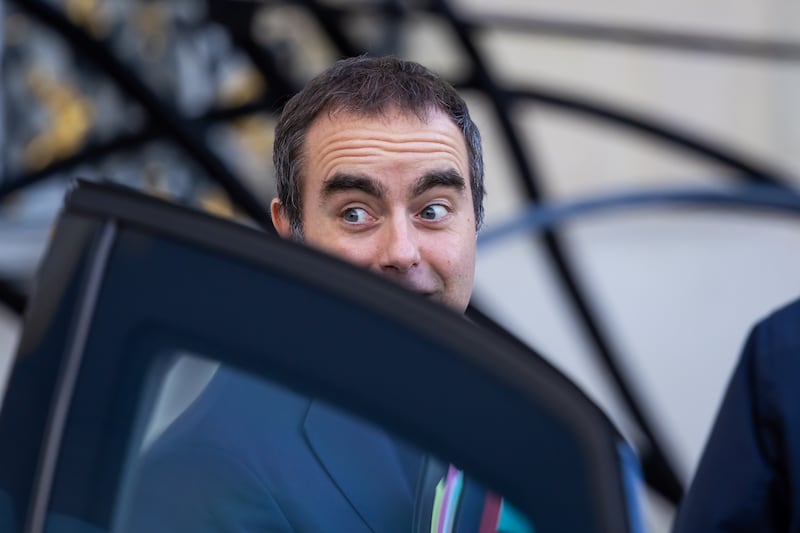Just three people turn up on Tuesday night to a public meeting in St Mary’s GAA club in Saggart. The gathering on the outskirts of Dublin has been called to discuss plans for the biggest changes to public transport in the capital in generations.
“I’m disappointed that there’s not much more here, because a lot of people use the bus. I know my own friends were talking about this meeting at bingo last week, and they didn’t turn up,” says Vera Walsh from Saggart.
Elsewhere, however, unhappy people have turned out, often in significant numbers. Nearly 500 people did so in Malahide in July, and hundreds took to the streets of Chapelizod village to protest during Pope Francis’s visit in August.
Under the BusConnects plan, dozens of long-established routes throughout the city would be abolished, replaced by a design that promises faster journeys, but would require passengers, in some cases, to changes buses.
But not everyone is happy. Friday night was the deadline set by the National Transport Authority (NTA) for the public's response to the planned changes, which are due to come into effect in 18 months. Twenty thousand people replied during the consultation process.
Since mid-July, following the publication of the plan, scores of meetings have been held in community centres and sports halls across greater Dublin, organised by local activists and politicians.
Separately, the authority – perhaps fearing heavy opposition to the plan – has held 33 information sessions, meeting about 15,000 people. In a July briefing for the board of the NTA, executives warned that “a sustained campaign of criticism” would likely be run against it. A personalised campaign against its main designer, US-based transport expert Jarrett Walker, could form part of this, they said.
I've heard people tell me that interchange is an American idea, or interchange is something that doesn't work in bad weather. That's all nonsense"
What is BusConnects?
If implemented, BusConnects would see Dublin’s current numbered bus system replaced by one based on seven core routes, identified from A to G, running every four to eight minutes.
Some passengers would have to change buses to complete their journey, the plan accepts – but journey times would still be significantly shorter than today for many of the commuters who make 136 million journeys by bus in the city every year.
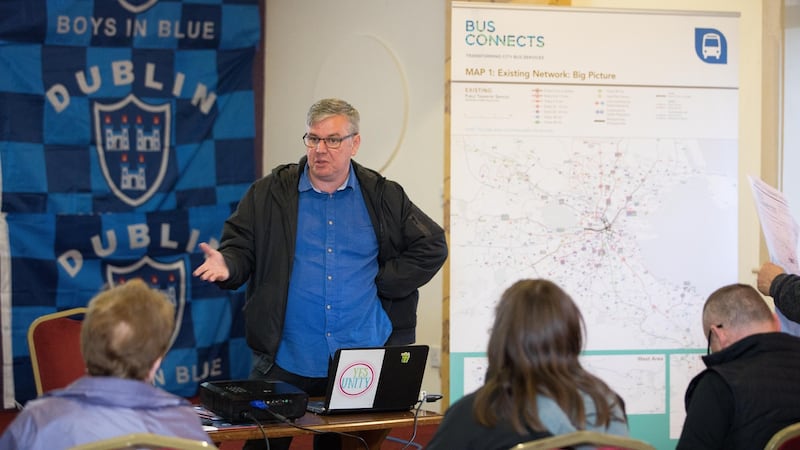
"The number of people living within 400m of a bus service that operates every 10 minutes or still more frequently will increase by 35 per cent . . . There will be an increase of 10 per cent in the fleet serving the greater Dublin area, with significant increases in weekend and post-peak services," Minister for Transport Shane Ross told the Dáil earlier this month.
Thirteen supporting orbital routes would operate around the city, rather than running into or through the city centre, as most do now. Services on these routes would run every 15 minutes “or better”, enabling journeys that are impossible today without travelling into the city centre and back out again.
The new network would see bus services in greater Dublin – which is increasingly facing major traffic hold-ups, particularly with a resurgent economy – increase by more than a quarter.
The route plan is to be finalised by March next year, but daily journeys would not change for nearly a year afterwards – preceded by a public information campaign.
The opponents
Yet many are not persuaded. Some oppose the plan because they stand to lose direct routes. For others, it is annoyance that they could be left in the rain while waiting for a second bus en route to work or home. Or they fear that the buses on the orbital routes will be too small. Others worry the plan foretells route privatisation.
Tom O’Connor from the National Bus and Rail Union (NBRU) is a veteran of more than 30 public meetings across the city and says the message he has received from the public is clear: “People don’t want interchange,” he says. “They’ll sit on a bus for a few minutes extra for the convenience of just getting on one bus. That’s the message at these meetings.”
Fianna Fáil TD Sean Haughey warns that locals rarely wish to see the loss of long-established services, and lists several “problems” in north Dublin: the 27A route in Edenmore, the 31 in Howth, the 14, 16, 27B and 17A in Artane, Beaumont, Coolock, Kilmore, Santry and Clonshaugh.
The low turnout in Saggart surprises Sinn Féin Cllr Danny O’Brien, one of the organisers of the meeting, given that under the plan the town would lose its direct number 69 bus service into Hawkins Street, Dublin 2. Instead, locals would have to jump on a bus to Tallaght, then transfer to a city centre-bound service.
Taking buses from one section of the community to another, that's not solving a problem; it's creating a problem elsewhere"
“We paid a company to deliver leaflets so it might have just been the leaflets didn’t go out or the venue, maybe there was a bit of confusion,” says O’Brien. “We had around 70 or 80 people in north Clondalkin at the start of the month.”
Walsh, a regular passenger on the 69 bus, is disappointed that the Saggart direct service is to go, but hopes changes can be made to the plan before the final network map is published in early 2019.
“There’s going to be a new 63 bus from Fortunestown into the city centre; they could just extend that to Saggart and Rathcoole. Otherwise you’d have to get the Luas, which is a bit of a walk, or get two buses. For pensioners like me that’s a bit of an ordeal,” she says.
Others stand to benefit from the changes. In Saggart, Lisa Kelly says her daughter, now studying law in Maynooth University, would have a direct run on the W8 to Kildare town under the plan, rather than having to get a Luas into the city centre and then a bus to the university’s campus.
“The fact there would be a direct route is great but I’m still not sure how long that journey would be,” says Kelly. “There hasn’t been much information, I’ve had nothing in the door regarding the proposals.”
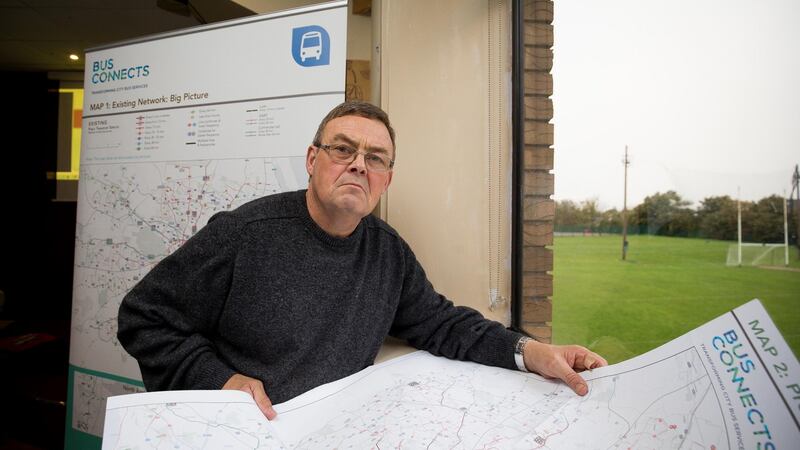
Propaganda battle
Some fear that a plan that could benefit the city will be used for political point-scoring. Last week in the Dáil, Labour TD for Dublin Fingal, Brendan Ryan, accused Fianna Fáil of using the process as “an opportunity to get posters on poles and leaflets in doors and to tap into people’s fear of change”.
“I believe ‘Save our bus service’ messages are reckless,” he said. “They foment the belief that public consultations are foregone conclusions and not something with which people should engage positively.”
Ryan’s constituency colleague, Fianna Fail’s Darragh O’Brien, says he “utterly rejects” this idea. The party, he says, has held eight public meetings in the north county Dublin area over the past two months.
“We called public meetings to make sure people were advised on what the proposals were and how to make submissions. If we didn’t engage as a party, the public consultation would have been over already.”
Similar charges have been made towards the NBRU – which also rejects them. Dermot O’Leary, general secretary of the union, says it has not organised any public meetings and was invited to speak by community activists and local politicians.
“What we have been saying all along, despite the detractors, is that we’re not anti-change, in fact we are pro-change, pro-improvement. But taking buses from one section of the community to another, that’s not solving a problem; it’s creating a problem elsewhere,” he insists.
Not all unions are so flatly opposed. Siptu’s transport sector organiser John Murphy says his union is “definitely in favour of anything that grows the network and invests €2 billion into bus transport”.
“The only reservations we have is the fact that some communities – particularly elderly and the disabled – may not welcome these plans with transferring buses and the loss of some direct city service routes,” he said.
“We would hope that whatever submissions go in will be collated and changes can be made so that the new network can work for the vast majority, if not all who are dependent on the services.”
For a long time the bus network has been archaic in the sense that it has been really heavily focused on the city centre"
‘Choking on traffic’
And what does the person who designed the system think? Jarrett Walker & Associates was awarded the contract by the NTA to assist in developing a redesign of the Dublin Bus network in early 2017.
"I've heard people tell me that interchange is an American idea, or interchange is something that doesn't work in bad weather. That's all nonsense," Walker tells The Irish Times.
He says around 30 per cent of existing passengers are interchanging within the public transport system already. “Interchange is a normal feature of almost every western European continental transport system,” he says.
Walker says there has been much concern regarding peak services and whether there will be enough capacity during rush hour and peak periods.
“That is something we weren’t really trying to get right this time round,” he said. “That’s the sort of detail that has to be worked through route by route, and we will do.”
Walker is due to return to Dublin now that the public consultation has closed. “We are going to sit down with the NTA, with Dublin Bus, and having reviewed the comments and pulled out the big views from them, we’re going to do a big redesign exercise where we’re going to look at ways to revise the plans to express as many as the comments as we can,” he says.
“I’m sure we can’t address all of them but I think people will find many of their concerns have been addressed in the next revision.”
Walker remains firm on one point, however: “Dublin is choking on traffic.”
He is not the only one with that point of view. Enda Murphy, professor of planning at the school of architecture, planning and environmental policy at UCD agrees that an overhaul of the bus network in the Dublin area is long overdue.
“For a long time the bus network has been archaic in the sense that it has been really heavily focused on the city centre, and that harks back to a time when most of employment was in the city centre and people lived in the suburbs,” he says.
“Where people are living and where people are employed means that the geography of travel has changed and therefore the network needs to respond to that. I think BusConnects does that.”
















